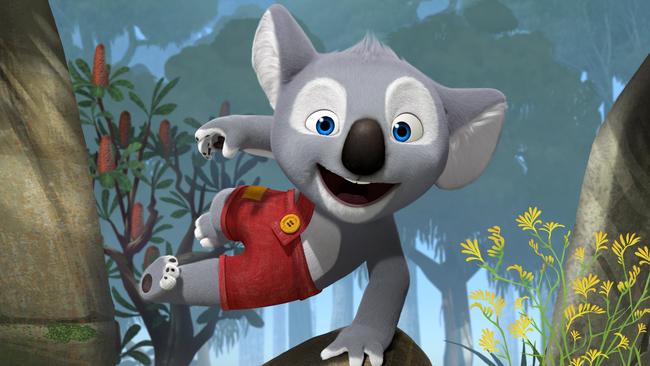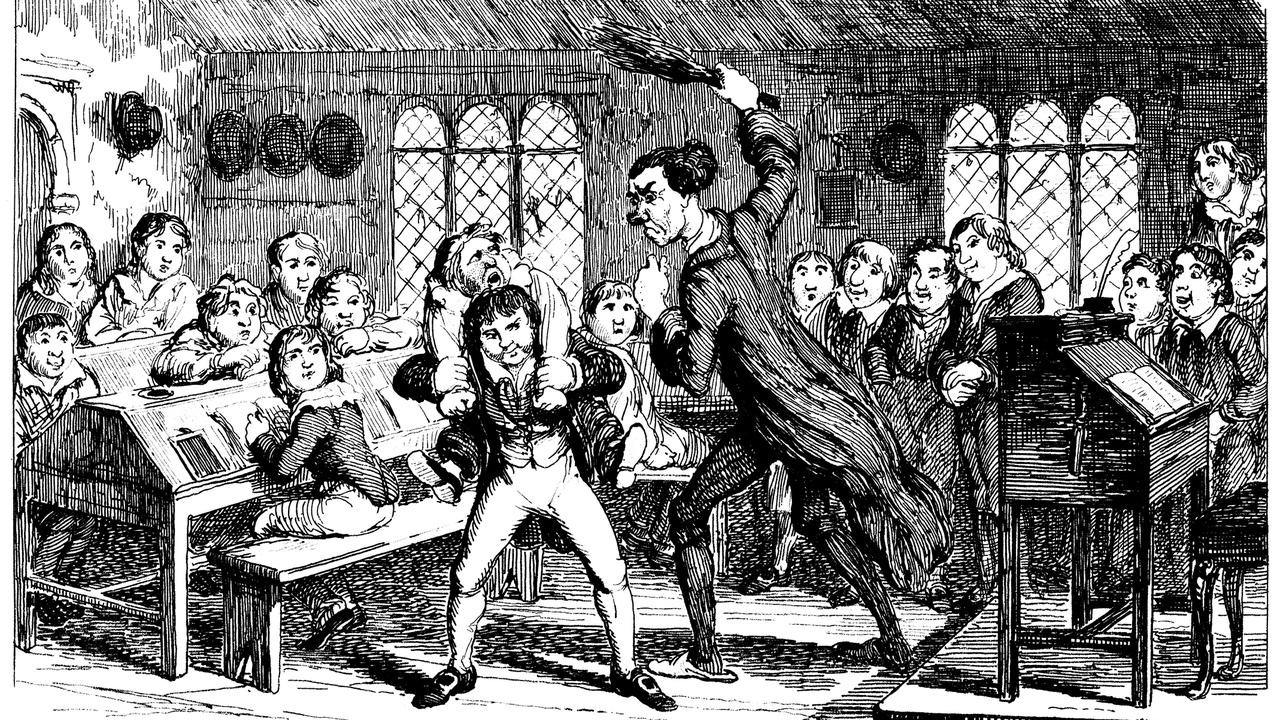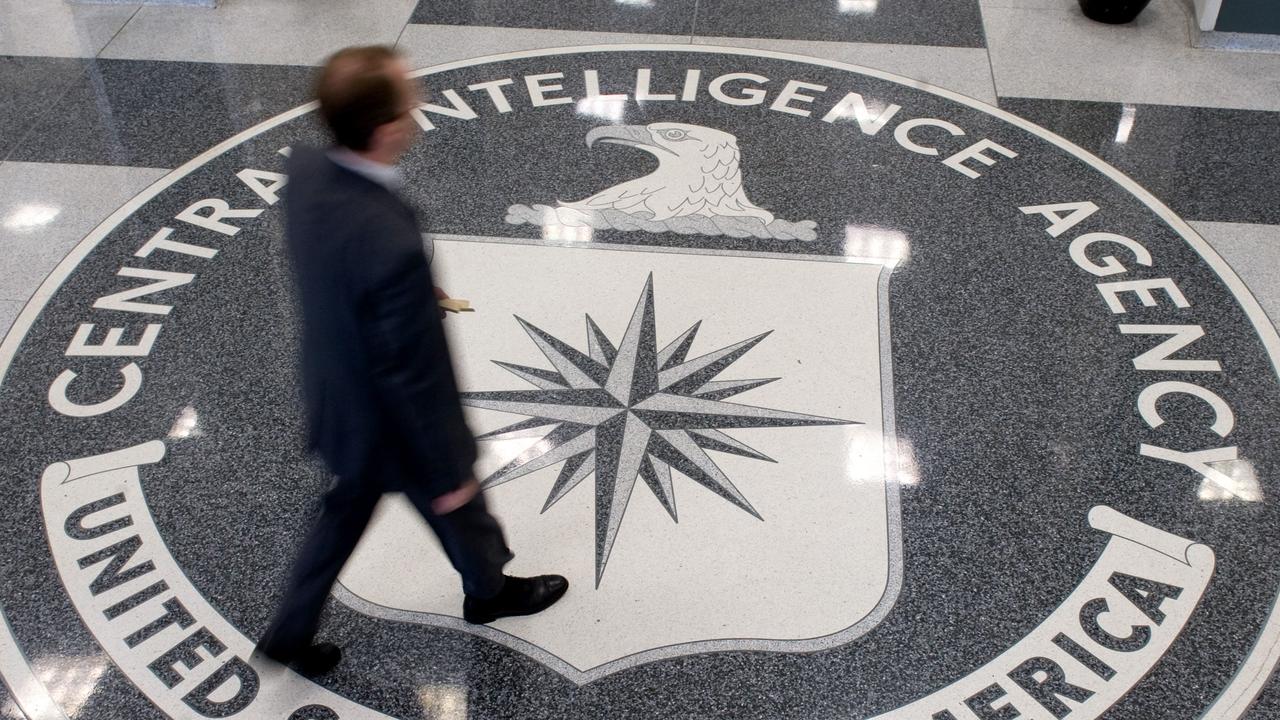Blinky Bill revived in children’s film with Ryan Kwanten, David Wenham
Australia’s favourite koala, Blinky Bill, is 80 but his latest incarnation sees him very much full of life.

Blinky Bill is the koala who can’t be knocked from his tree. More than 80 years after the mischievous marsupial first appeared as an illustrated character drawn by Dorothy Wall, he lives another life in the new Australian computer-generated imagery film Blinky Bill the Movie.
Producer Barbara Stephen, of Flying Bark Productions, is confident the movie will find an audience, primarily because research suggests as much. The character has been a constant on television screens since the 1980s, with telemovies and TV series being renewed and recalibrated slightly every decade.
The early 90s movie and TV series, directed and produced by Australian animation pioneer Yoram Gross, were particularly successful across Europe and Asia, and the two-dimensional cartoons have been screened consistently on the ABC.
FILM REVIEW: What Stephen Romei thinks of Blinky Bill the Movie
The jump into another feature film was not an obvious move by an Australian production company, given the technical and commercial might of the US animation studios that tend to dominate school holiday cinemas — Pixar, DreamWorks Animation, Blue Sky, Illumination and others.
But Flying Bark Productions and its licence agent researched the market and the results were gratifying. A 2011 Merchantwise study of Australians aged 18-69 (half of whom had kids aged 0-8) showed 80 per cent of the population visually recognised Blinky Bill and 49 per cent had read a Blinky Bill book.
Indeed, Wall’s books (including Blinky Bill: The Quaint Little Australian, Blinky Bill Grows Up and Blinky Bill and Nutsy), published by Angus & Robertson, now under HarperCollins, have never been out of print. The books and TV series have been pervasive, as has the character, which was even adopted as a mascot by the Australian Republican Movement in the mid-90s.
Stephen agrees that the distribution of Blinky Bill products across decades has been incredibly successful. Yet it would mean little if the character didn’t connect. “By virtue of it being so Australian and so relevant to kids, he is a character that stood the test of time,” she says. “Australian animals, Australian accents — people still respond to that.
“But certainly, about 85 per cent awareness, we were quite surprised about. One of the reasons was the 2-D cartoon had been screening on the ABC up until last year. It has had quite a life.” But, she concludes, “We wanted to create a film that would be relevant to today.”
This new life will include a 26-episode animated series for the Seven Network, produced in association with Ireland’s Telegael and India’s Giant Wheel, The Wild Adventures of Blinky Bill.
First is the feature film, though. Flying Bark hasn’t held back, recruiting an internationally marketable cast of voices including Ryan Kwanten as Blinky Bill, Brit Rufus Sewell, Toni Collette, David Wenham, Deborah Mailman, Richard Roxburgh and Barry Humphries. The film required an A-list cast, strong characters and credible animation to be relevant to audiences used to watching Pixar and DreamWorks films.
That it is, funnier than anticipated for an adult audience, and the animation holds its own, falling behind Pixar films only in the detail of backgrounds, which is a minor quibble. Stevens says screenings for international distributors have been positive, the animation quality and characterisations highly regarded.
Flying Bark, formerly Yoram Gross Film Studios, is now part of the Belgian-German media group Studio 100, meaning the studio already has European partners committed to reaching a broad audience with the film and building on the success of its Australian feature Maya the Bee Movie. Despite earning only $250,000 last year after a limited release — “because there was still a bit of anxiety around family films and animation and Australian films” — the film has earned more than $28m globally from 35 countries.
The evolution of Blinky Bill visually has been rocky, from its black-and-white to colour illustrations through to an odd puppet show version before the more traditional 2-D cartoon version, although even Gross’s koala initially generated its own controversy.
“It was a no-brainer to create a CGI film,” Stephen says. “The evolution of design was something we knew had to change to make it relevant, but maintaining the characteristics of still being cheeky, and he still has a special relationship with mum.”
The film’s surprise, and an area Stephen and her co-producers considered important to distinguish the film, is its humour. “And it’s really helped along by the cast,” she says. “A lot of the cast really understood what tone we were going for; a little bit of ocker humour that didn’t go too far. I felt like the comedy was the key.”
David Wenham, who plays Jacko the frill-necked lizard, jumped in with zeal. “Animation I love!” he says. “I love watching animated movies, but then as an actor to do them is the best thing because you’ve got a licence to be absolutely ridiculous. Or I did on this because I play a lizard. I can be stupid, it’s so good!”
Hopefully for Flying Bark, this iteration of the beloved koala will be better than good. Licensing rights and merchandising revenue from Blinky Bill have been inconsistent, Stephen says.
“The way licensing and merchandising work means you have to have series and films out in the marketplace, and it’s extremely competitive. It’s dominated by some of the key larger blockbuster and animated films such as all the Marvel and Star Wars product.”
This Blinky Bill life began last year with a range of “classic Blinky Bill” products released through Australia Post stores. “Like anything, it’s about managing risk, and certainly for us we didn’t want to just bring Blinky back in as a film,” she says.
The risk is paying off as commercial partners jump on board and the merchandising rumbles. The Currumbin Wildlife Sanctuary on Queensland’s Gold Coast is now a major licence partner with a Blinky Bill theme park show. Qantas is one of the commercial partners on the film
“Because it appeals to a family audience and having an iconic cast and having that brand history, that’s the difference,” Stephen says.



To join the conversation, please log in. Don't have an account? Register
Join the conversation, you are commenting as Logout